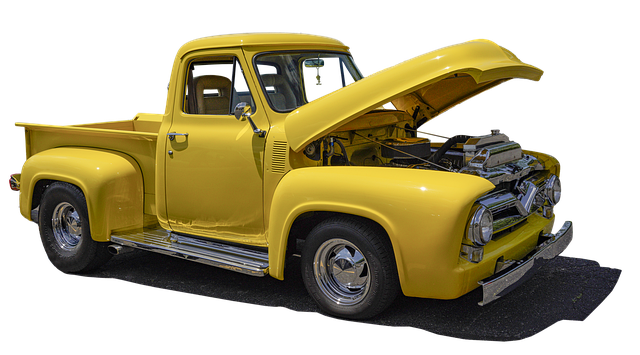“Unsure about registering your car in California? This comprehensive guide breaks down the process step-by-step, ensuring a smooth experience. From understanding the requirements to gathering essential documents and verifying your vehicle’s VIN using reliable DMV tools, you’ll be prepared. We’ll walk you through the registration process at the DMV, offering insider tips for a hassle-free transaction. Plus, discover post-registration must-knows specific to California. Get ready to hit the road legally!”
- Understanding the California Car Registration Process
- Gathering Necessary Documents for Registration
- How to Verify a Vehicle's VIN (Vehicle Identification Number)
- Step-by-Step Guide: Registering Your Car at the DMV
- Post-Registration: Important Things to Remember in California
Understanding the California Car Registration Process

Understanding the California Car Registration Process
Registering a car in California involves several steps designed to ensure vehicle safety and roadworthiness. The process begins with gathering essential documents, including proof of ownership, insurance, and identification. Once prepared, individuals must visit a California Department of Motor Vehicles (DMV) office or use their online services for registration. A key part of this process is the verification of the Vehicle Identification Number (VIN). Using a DMV VIN verifier, whether it’s done online or in-person, ensures that the vehicle matches its listed specifications and helps prevent fraud.
For those who prefer a more convenient approach, mobile VIN verifiers offer an alternative solution. This service allows for a quick and easy vin inspection right from your smartphone, saving time and effort. By combining these modern tools with traditional DMV procedures, car registration in California becomes streamlined and secure.
Gathering Necessary Documents for Registration

Before you begin the registration process in California, it’s essential to gather all the necessary documents. One crucial step is to obtain a Vehicle Identification Number (VIN) verification from a trusted source. The California Department of Motor Vehicles (DMV) recommends using a DMV-approved VIN verifier to ensure accuracy and legitimacy. You can opt for a mobile vin inspection or visit a designated center for this service. This involves verifying the VIN, which is unique to each vehicle, to check its history and authenticity.
Additionally, you’ll need various documents such as proof of ownership (a title or bill of sale), valid identification (driver’s license or state ID card), proof of insurance, and registration fees. If you’re registering a vehicle for the first time in California or transferring ownership, make sure to have all these items ready. A vin inspection is a straightforward process that helps ensure your vehicle’s compliance with state regulations during registration.
How to Verify a Vehicle's VIN (Vehicle Identification Number)

To begin the registration process for your car in California, the first step is to verify your vehicle’s Vehicle Identification Number (VIN). This unique 17-character code acts as a fingerprint for your car and is essential for accurate record-keeping at the Department of Motor Vehicles (DMV). You can easily check the VIN using various methods. One convenient option is to use a mobile vin verifier, which allows you to complete this step quickly and from the comfort of your home or even while you’re on the go. Simply input your vehicle’s VIN into the app or website, and it will provide instant validation, ensuring its accuracy.
Alternatively, if you prefer a physical check, locate the VIN plate typically found on the driver’s side door frame or the engine bay. Write down the number and double-check its validity by using the DMV’s online vin inspection tool. This process is straightforward and can be completed in just a few minutes. With these simple steps, you’ll be well on your way to registering your vehicle smoothly and efficiently.
Step-by-Step Guide: Registering Your Car at the DMV

Registering your car with the California Department of Motor Vehicles (DMV) is a straightforward process that involves several steps. Here’s a step-by-step guide to help you navigate through it. Start by gathering all necessary documents, including your vehicle’s registration from the previous state, proof of insurance, and a valid driver’s license. Then, visit your local DMV office or use their online services to initiate the registration process.
Next, ensure your car passes the required safety inspection, which can often be conducted using a mobile vin verifier (or mobile vin verification tool) to check the vehicle identification number (VIN). Once your car is approved, you’ll need to pay the registration fees, which vary based on the type and age of your vehicle. Finally, receive your new California vehicle registration card and ensure it’s displayed properly on your vehicle. This process typically takes less than an hour when done in-person or can be completed entirely online with a vin inspection tool for remote verification.
Post-Registration: Important Things to Remember in California

After successfully registering your vehicle with the California Department of Motor Vehicles (DMV), there are several key points to keep in mind to ensure a smooth ownership experience. Firstly, maintain proper documentation, including your registration card and proof of insurance, at all times while driving. These documents serve as crucial identifiers for your vehicle.
Additionally, remember that a mobile VIN verifier can be an invaluable tool for ensuring the integrity of your car’s history. Whether utilizing a mobile VIN verification service or conducting a manual inspection, regularly checking the Vehicle Identification Number (VIN) ensures that there are no discrepancies in the vehicle’s reported history, enhancing both safety and transparency.
Registering a car in California is a straightforward process once you understand the requirements. By gathering all necessary documents, including proof of ownership and insurance, and verifying your vehicle’s VIN using a trusted DMV vin verifier, you’ll be well on your way to completing the registration at your local DMV. Following our step-by-step guide ensures a smooth experience, and knowing post-registration details helps ensure compliance with California’s regulations.
